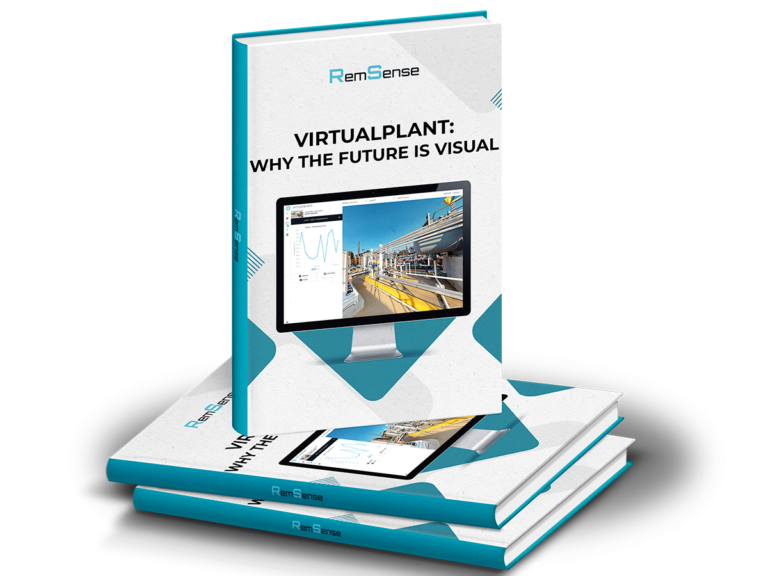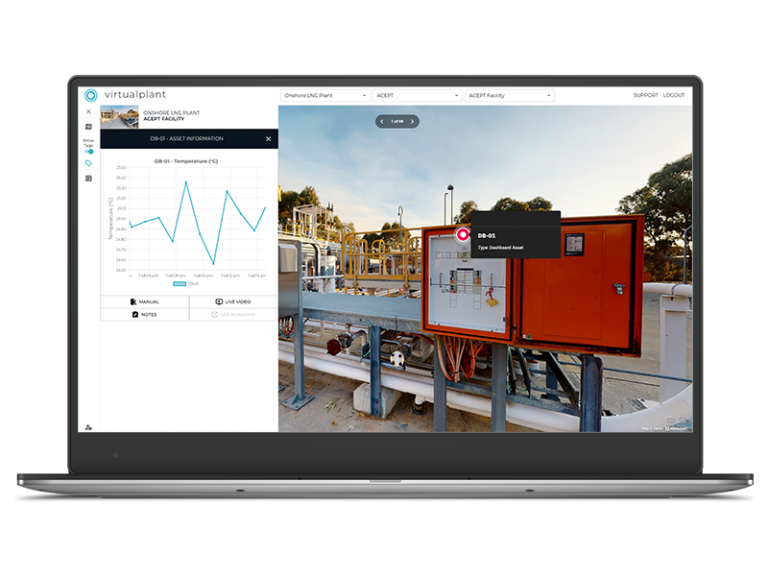Digital twin technology is one of the most innovative and beneficial advances made via technology the oil and gas industry has had at its disposal in decades.
However, not all facilities are using digital twin technology to the fullest or at all. A stunning two-thirds of all global oil production facilities with complete access to the necessary tech to make great strides using digital twins do not use it. There can be various reasons, such as the overwhelming amount of new technology arriving in short order or a lack of trained personnel.
There are a great many uses for digital twin technology that can significantly benefit the petroleum industry.
In this article, we cover ten use-cases of digital twin technology for the oil and gas sector.
#1 Asset management
The amount of work and revenue lost to sudden equipment failures and outages can be staggering. Not all parts are easy to replace, and lead to excessive work stoppages. However, you can avoid these types of issues using digital twin technology. Twin technology can help you and your staff function at peak efficiency by giving you a virtual copy of physical assets. This would include replicas of various assets such as pumps, compressors, turbines, and pipelines. Replicas of such machinery will help monitor equipment health, detect early signs of failure, and identify opportunities for improvement. Ultimately, digital twin technology can extend the life of costly equipment by monitoring functions and providing real-time solutions being connected to IoT devices and CMMS.
Key Benefit: Advance warning of potential asset issues to preempt breakdowns and work stoppages also known as predictive maintenance.
#2 Safety
The petroleum industry faces several critical safety challenges, with one of the most pressing being the logistical mobilisation of personnel to remote sites. Nevertheless, the implementation of digital twins for facilities introduces a streamlined and cost-effective approach to maintenance campaigns by significantly reducing the need for physical travel. Many tasks that previously required on-site presence can now be executed remotely, simplifying the monitoring of potential trouble areas through IoT (Internet of Things) devices and facilitating swift repairs. Furthermore, twin technology has the capability to forecast the outcomes of accidents or failures, providing guidance on preemptive measures to prevent further damage and enabling timely repairs before critical incidents transpire.
Key Benefit: Petroleum producers can avoid the risks associated with traditional inspection methods.
#3 Operational efficiency
In essence, digital twin technology creates a replica of a physical asset having details of an entire plant or operation. It gives analysis in real time, showing functional operations, identification of less-than-optimal equipment, predicted maintenance, and all other aspects of a site. Additionally, twin technology can find ways to optimise production and locate profitable changes in equipment and techniques.
Key Benefit: Creates efficiency and optimal operations
In the 24/7 operational landscape of the petroleum industry, the need for constant vigilance over all components involved is paramount. This can be particularly challenging in remote and hazardous locations. Digital twins serve as a collaborative ally, enabling seamless remote monitoring and control, as well as providing real-time visibility into equipment and processes at sites, even those situated in the most isolated areas. With team collaboration at the forefront, twin technology can swiftly intervene in the event of a problem, thus preventing costly damages and work stoppages, while also fostering effective teamwork and decision-making by providing teams with shared access to critical data and insights, regardless of their physical location.
Key Benefit: Digital twin technology offers the ultimate supervisor that is on top of functions in an entire location.
#4 Remote monitoring
In the 24/7 operational landscape of the petroleum industry, the need for constant vigilance over all components involved is paramount. This can be particularly challenging in remote and hazardous locations. Digital twins serve as a collaborative ally, enabling seamless remote monitoring and control, as well as providing real-time visibility into equipment and processes at sites, even those situated in the most isolated areas. With team collaboration at the forefront, twin technology can swiftly intervene in the event of a problem, thus preventing costly damages and work stoppages, while also fostering effective teamwork and decision-making by providing teams with shared access to critical data and insights, regardless of their physical location.
Key Benefit: Digital twin technology offers the ultimate supervisor that is on top of functions in an entire location.
#5 Well optimisation
As you know, optimising a well does more than attempt to raise production and profits. Significant issues can occur, such as precipitation of scale, deposition of paraffin and asphaltene, and coning of water and gas caused by low-flowing bottom hole pressure.
However, since digital twin tech can make virtual models of your wells you can increase operational efficiency by:
- Collecting real-time data from sensors
- Simulating the behavior of the well
- Predicting the impact of various factors, including pressure, temperature, and flow rate.
- Using data to optimise production, reduce downtime, and improve safety
Key Benefit: Optimisation assists by giving real-time reports of well performance and avoiding problems caused when the well is functioning without workers’ direct oversite.
#6 Predictive maintenance
Digital twins can examine the health and function of equipment in real time using IoT devices. This helps to reduce the need for emergency asset repairs and work stoppages associated with unforeseen problems.
This is possible because digital twins monitor how equipment performs and create individualised asset signatures. Among other data, twin technology records ambient and operational conditions. The real-time data is compared to the data extracted by the digital twin. With this capability, any early deviations or malfunction warnings are used to prevent significant breakdowns.
Key Benefit: Reduction of expensive breakdowns because companies no longer run on reactive/proactive maintenance methods.
#7 Field development
The use of digital twin technology can eliminate hours spent in field development. The tech, along with machine learning and high-level data analytics, make it possible to create virtual models of oil and gas reservoirs. These can be used to replicate various search scenarios. Digital twins use real-time data collected by sensors to predict the potential yield. Using real-time sensor data, digital twins can predict the reservoir’s yield potential. Additionally, the same data can be used to assist in optimising drilling.
Key Benefit: Twin technology can reduce labour and engineering costs during field development.
#8 Cost savings
Digital twin technology allows oil and gas companies to reap substantial cost-saving benefits. Efficiency, maintenance, future projections, real time visualisation of pipelines, and employee safety are just a few of the ways digital twin technology benefits oil and gas companies. In addition to these, overall cost savings are well documented. For example, implementing digital twins on offshore projects in the North Sea saved millions of euros as the costs came in well under projections. Companies can also save approximately ten per cent on decommissioning costs.
Key Benefit: Opportunity to save significantly in various facets of the oil and gas industry by implementing the digital twin technology.
#9 Skill enhancement and training
Digital twins play a pivotal role in advancing the skills and expertise of industry personnel. By integrating digital twins with cutting-edge virtual reality (VR) technology, a transformative training platform is born. Consider, for instance, a digital twin meticulously replicating the intricate workings of an oil refinery. This virtual environment offers personnel an immersive and true-to-life training experience, allowing them to refine their skills and deepen their understanding. This dynamic training approach not only elevates safety protocols but also elevates the standards of product quality and operational processes, cultivating a workforce well-prepared to meet the demands of the industry.
Key benefit: better-prepared personnel, improved safety, cost savings, and higher-quality outcomes in industrial operations.
#10 Drilling optimisation
Digital twins can simulate different drilling scenarios and provide insights into accuracy, the best strategies, and ways to streamline operations. By modelling your drilling options, unexpected issues are avoided. Additionally, you can try variations without committing workers and resources to participate in such trials. Drilling operations will be safer, more efficient, and cost-effective with digital twin technology.
Key Benefit: Safer, faster, and more accurate drilling in established zones and a greater range of exploration
Conclusion
The use of digital twin technology is growing in scores of industries and will continue to expand well beyond where it is today. Considering the cost savings, accuracy, and increased safety, it is easy to see the perfect fit of digital twins for the oil and gas industry.

